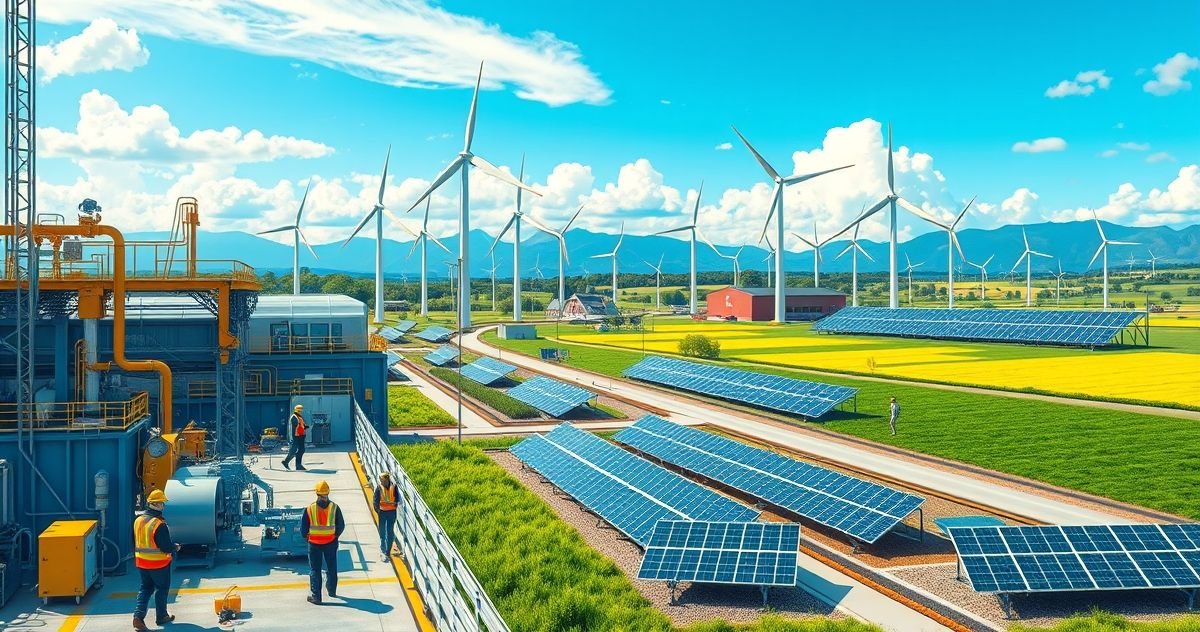Overview of the Clean Energy Manufacturing Tax Credit
The Clean Energy Manufacturing Tax Credit, often referred to as the Section 48C Tax Credit, is an important financial incentive established in the United States to bolster the domestic production of clean energy technologies. The primary aim of this credit is to encourage investment in renewable energy and energy efficiency by providing tax reliefs to companies that invest in manufacturing facilities producing clean energy components. The initiative not only aims to enhance the share of renewable energy in the national energy portfolio but also stimulate economic growth and job creation in the green sector.
Primary Purpose
The crux of the Clean Energy Manufacturing Tax Credit is to diminish the nation’s reliance on fossil fuels and to meet climate action goals by driving the shift towards renewable energy sources. This tax credit supports the establishment, expansion, or retooling of manufacturing facilities that produce advanced energy technologies such as wind turbines, solar panels, grid storage solutions, and other technologies pertinent to renewable energy production and efficiency. By reducing the initial financial burden on manufacturers, this credit plays a significant role in accelerating the deployment of renewable technologies and promoting sustainability within the energy sector.
Key Features or Components
The Clean Energy Manufacturing Tax Credit has several distinct features that make it an attractive option for companies:
- 20% Credit: The tax credit covers 20% of the investment costs for establishing or expanding facilities that manufacture eligible clean energy technologies.
- Eligibility Criteria: Facilities must produce specific clean energy components like solar panels, wind turbines, batteries, and other technologies recognized under the credit framework.
- Capital Expenditure Support: The tax credit applies to investments in property and equipment used for manufacturing processes, thereby easing capital expenditure concerns.
- Job Creation Potential: By incentivizing clean energy manufacturing, it contributes to job creation and economic activity in sectors linked to renewable energy.
Relevant Filing or Compliance Requirements
To take advantage of the Clean Energy Manufacturing Tax Credit, companies must adhere to specific compliance requirements. This includes applying through a competitive process overseen by the Department of Energy and the IRS. Companies need to submit detailed project proposals and demonstrate how their manufacturing investments align with the policy’s environmental and economic goals. Specifically, they must provide extensive documentation on expected job creation, energy production efficiency, and technological advancements. Furthermore, they must comply with all federal environmental and labor standards to qualify for the credit.
Penalties or Consequences for Non-Compliance
While the Clean Energy Manufacturing Tax Credit offers significant benefits, companies face strict consequences for failing to comply with the program’s requirements:
- Revocation of Credits: If a company is found to have misrepresented its project details or failed to meet compliance standards, the tax credit may be revoked, resulting in substantial financial liabilities.
- Repayment Obligations: Non-compliance can trigger clawback provisions, wherein companies must repay any credits received, along with interest, which can pose a severe financial setback.
- Legal Penalties: In severe cases of fraud or deliberate non-compliance, legal action may be pursued, leading to further financial and reputational damage.
Importance and Significance
The significance of the Clean Energy Manufacturing Tax Credit extends beyond mere tax benefits; it is a cornerstone policy for achieving national goals in renewable energy and economic development. By motivating manufacturers to invest in green technologies, the credit plays a pivotal role in reducing carbon footprints and achieving energy efficiency benchmarks. It also facilitates transformational changes within the energy sector by nurturing innovation and technological progress in clean energy. In the context of tax resolution and financial compliance, the credit helps companies align their business practices with evolving sustainability standards while benefiting financially from their proactive environmental investments.
Furthermore, the broad socio-economic advantages associated with the tax credit are notable. It spurs regional economic development by fostering new manufacturing hubs, improves the balance of trade by reducing energy imports, and enhances national energy security. As such, the Clean Energy Manufacturing Tax Credit is fundamental not only to fulfilling statutory environmental obligations but also to realizing strategic economic aspirations on a global scale.
Ultimately, the Clean Energy Manufacturing Tax Credit stands as a comprehensive tool of fiscal policy that bridges the gap between environmental stewardship and industrial growth, positioning the United States as a leader in sustainable manufacturing and environmental responsibility.
